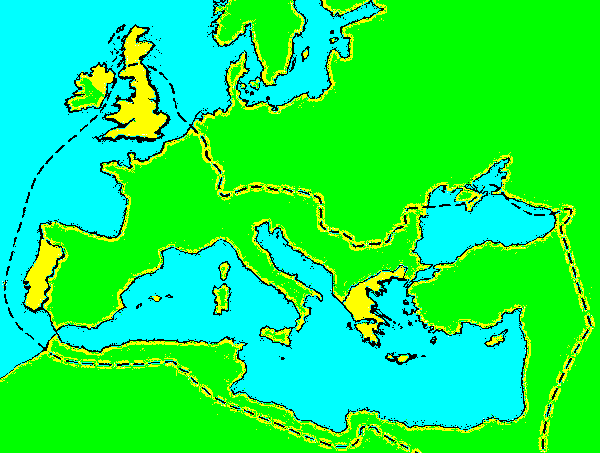

In the 1st and 2nd centuries, the Roman Empire reached its height under the emperors Augustus, Claudius, Vespasian, Trajan and Hadrian. It completely surrounded the Mediterranean, and embraced North Africa and Egypt and the Near East, as well as southern and eastern Europe and north-western Europe and Britain (incorporated by the emperor Claudius).
In the 3rd and 4th centuries, tribal pressure along the northern and eastern borders led to greater militarisation, more internal disorder, and finally to a split between the eastern (largely Greek speaking) and western (Latin speaking) halves of the Empire, with Byzantium (renamed Constantinople; the modern Istanbul) as capital of the eastern half.
Early in the 4th century the emperor Constantine became Christian. In 313 AD the Edict of Milan recognised Christianity, which became the official religion of the later Roman Empire.
The Empire allowed a common standard of values and of law to flourish around the Mediterranean. Despite considerable linguistic diversity two languages, Latin and Greek, were privileged as those of administration and of culture.
© 1998 Oxfordshire Museum Service, Setúbal Museums and the Benaki Museum